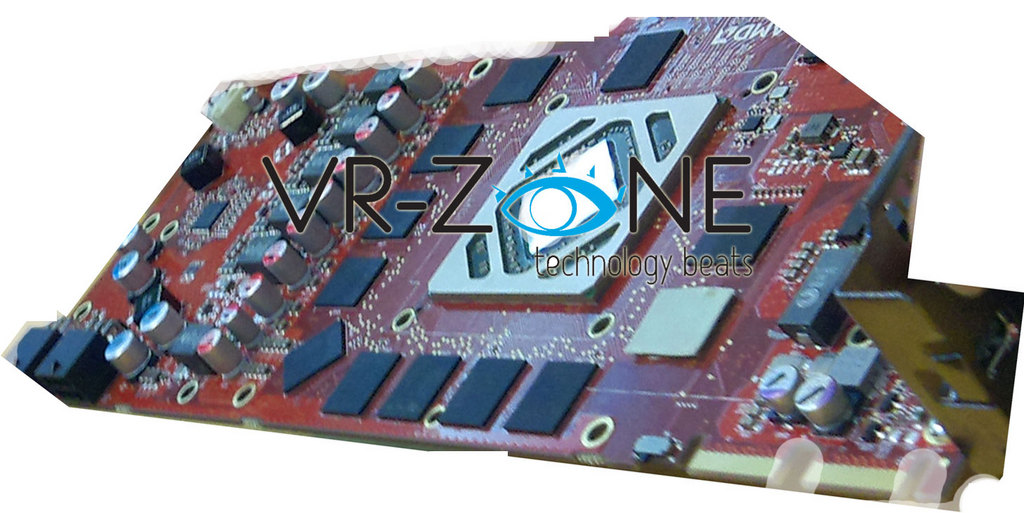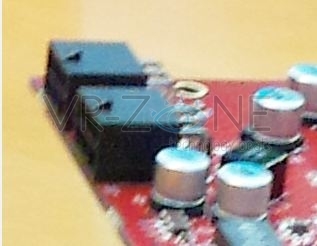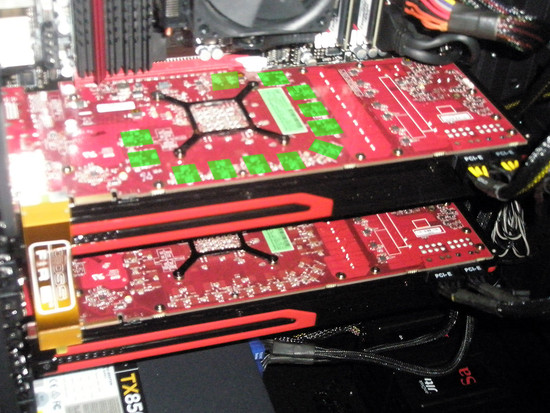AMD is getting pretty close to the launch of the new performance series Radeon HD 7900 and with that rumors are piling up. During the weekend new pictures of a naked HD 7900 and what is said to be specific specifications has appeared.
AMD calls the new graphics card family Southern Islands and the flagships of the new family will launch as the Radeon HD 7900 series. The graphics circuits will be called Tahiti and according to rumors gathered by 3Dcenter.org the nwq GPU – also known as R1000 – be a rarely transistor-dense creation. Unimaginable 4.5 billion transistors 3Dcenter claims that AMD has fit into the new flagship, which is nearly twice as many as the 2.64 billion in Cayman. Despite 70% more transistors the circuit will be similar in size with its 280 mm², which is all thanks to the 28 nanometer technology from TSMC.
 A picture of a nude Radeon HD 7900 with 12 memory circuits and a naked GPU.
A picture of a nude Radeon HD 7900 with 12 memory circuits and a naked GPU.
| Model | Radeon HD 7970 | Radeon HD 6970 |
| Architecture |
Northern Islands | Southern Islands |
| Node | 28nm | 40nm |
| Die size |
380mm² | 389mm² |
| Circuit | Tahiti XT | Cayman XT |
| Radeon cores | 2 048 | 1 536 |
| GPU frequency |
~1 000 MHz | 880 MHz |
| Memory bus |
384-bit | 256-bit |
| Memory buffer |
3 GB | 2 GB |
| Memory technology |
GDDR5 | GDDR5 |
| Memory frequency |
1250 – 1375 MHZz (5000 – 5500 MHz effectively) |
1375 MHz (5500 MHz effectively) |
| Memory bandwidth |
264 GB/s | 176 GB/s |
| ROPs | 48 | 32 |
| Texture units |
128 | 96 |
The base architecture will also be new, namely AMD’s GCN architecture (Graphics Core Next), which we’ve detailed in the past. The number of shader processors has increased to 2048 stycken and the texture units and ROPs have both been boosted. The GPU frequency is up near 1GHz, which will result in a theoretic max at 4 Gigaflops, compared to 2.7 Gigaflops in Cayman (HD6970).
Last but not least we have the previously revealed memory bus at 384-bit that together with GDDR5 memory at 5000 – 5500 MHz will result in an impressive memory bandwidth at 240-264 GB/s.
 2 x 6-pins power connectors is different from the 8-pin + 6-pin we saw on the older pictures.
2 x 6-pins power connectors is different from the 8-pin + 6-pin we saw on the older pictures.
The numbers published by 3Dcenter is not entirely off the chart, but at the same time just rumors so far. Especially frequencies and circuit size are not easily found before launch. It is not long to go now, and we can be pretty sure the new flagship will sport a 384-bit bus.
Source: VR-Zone, 3DCenter.org















